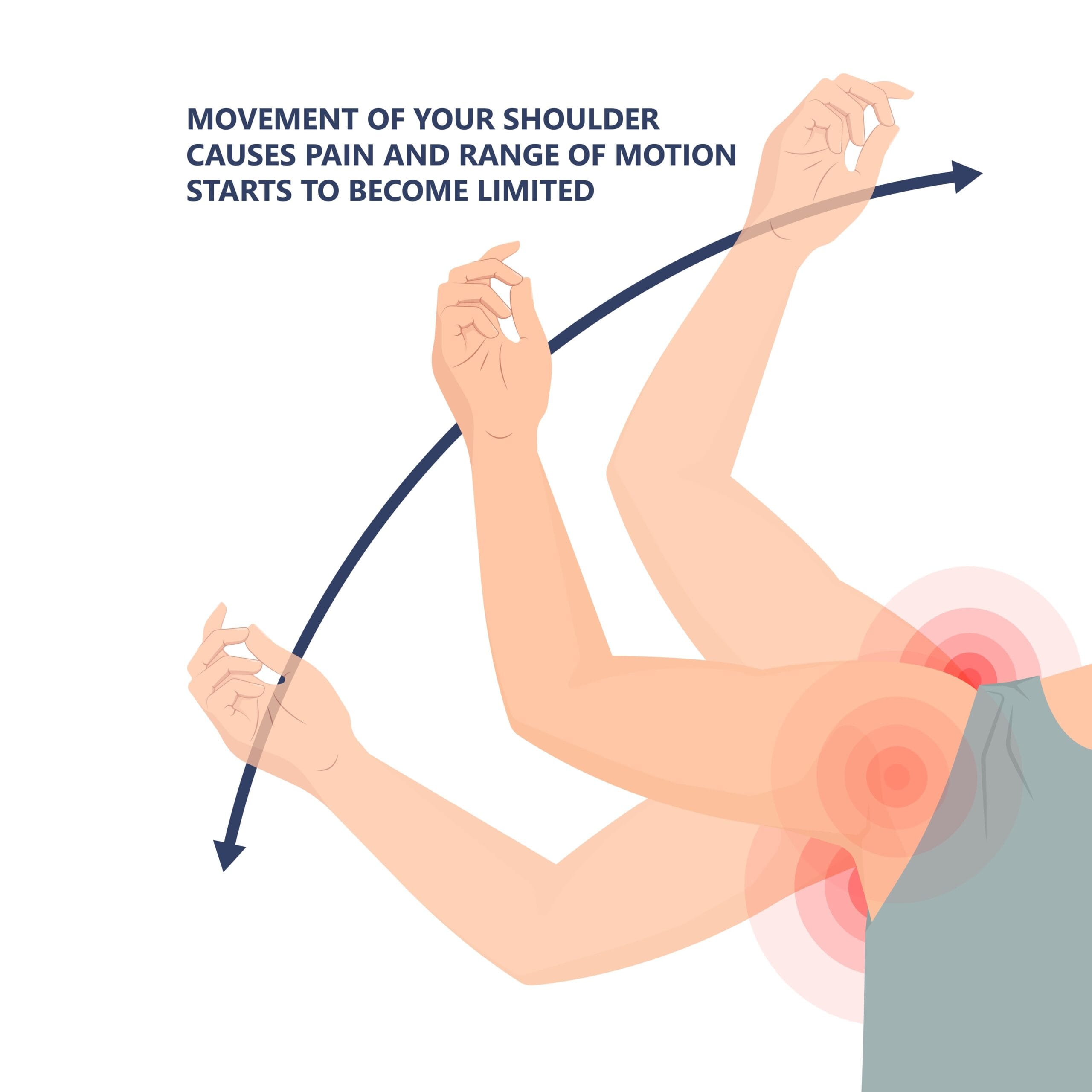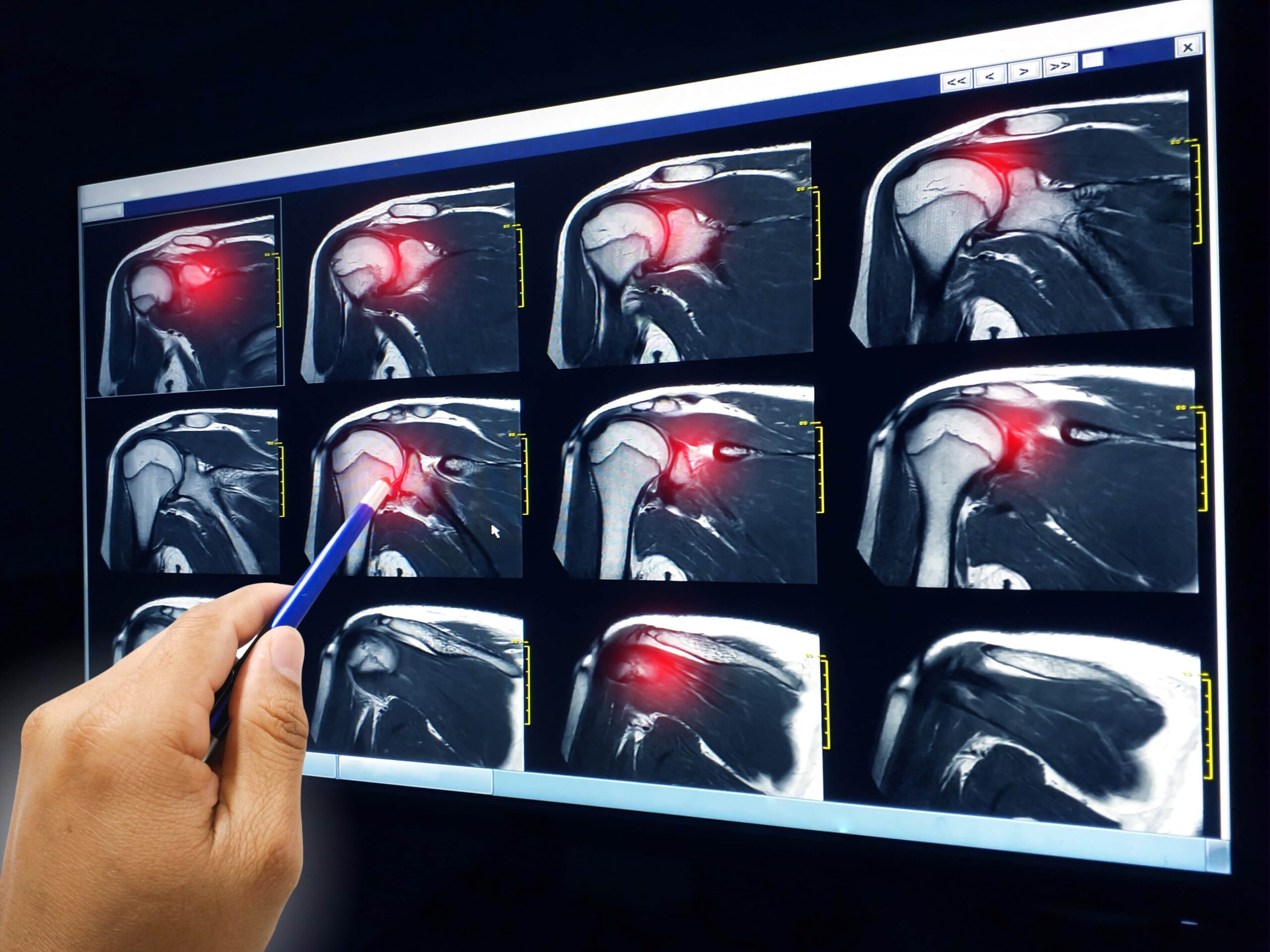One of the most common shoulder injuries in martial arts is related to the rotator cuff. In karate, the shoulder is the most often injured joint as seen in various world championships. Can rotator cuff injuries be prevented? Let’s see.
What is the Rotator Cuff?
A rotator cuff is a group of muscles in the shoulder. It stabilizes the glenohumeral joint. It includes the subscapularis, infraspinatus, supraspinatus, and teres minor muscle.
The glenohumeral joint is generally unstable because it is made of a large spherical humeral head Subscapularis: Medial (internal) rotation of the shoulder.
Supraspinatus abducts the arm while the infraspinatus externally rotates the shoulder and the teres minor muscle does the same. So if you’re unable to do any of these things then you’re probably looking at an injury to the rotator cuff.
Rotator Cuff Syndrome
Rotator cuff syndrome (RCS) is a spectrum ranging from minor injuries like acute rotator cuff tendinitis to advanced rotator cuff tendinopathy and degeneration. It usually starts with shoulder pain.
The rotator cuff tendons, especially the supraspinatus tendon, are uniquely susceptible to the compressive forces of impingement. What contributes to rotate cuff pathology includes improper athletic technique, poor posture, less conditioning, and failure of the subacromial bursa. As a result, the supporting tendons progressively get inflamed, calcify, and degenerate leading to a tendon tear.
Rotator cuff (RC) Tendonitis/Tendinosis
Tendonitis/Tendinosis is a chronic condition involving deterioration of collagen (a structural protein) in the tendons and is caused by chronic overuse of a tendon. Repetitive eccentric forces can cause acute or chronic tendonitis/tendinosis.
Shoulder Impingement
Athletes experiencing pain with overhead movements tend to have shoulder impingement. This could be internal or external impingement.
Internal impingement is common in overhead-throwing athletes. "Thrower's shoulder" occurs due to anatomic adaptive changes that occur over time.
Glenohumeral internal rotation deficit (GIRD) is another condition resulting from these anatomic adaptations. It predisposes a thrower's shoulder to internal impingement.
External impingement is due to external compressive sources which lead to subacromial bursitis and bursal-sided injuries to the Rotator cuff.
How to Prevent Rotator Cuff Injuries?
Strengthen the Cuff
You can strengthen the cuff by doing stretching exercises. One of them is the “doorway stretch.” It’s easy to do at home. All you have to do is stand in an open doorway. Spread your arms out to your side.
Grip the sides of the doorway at shoulder height. Spear your arms to the side. Keep your back straight and maintain a grip. Lean forward until there’s a slight stretch in the front of the shoulder. Return to the beginner stance. Repeat 8-10 times.
While maintaining your grip and keeping a straight back, lean forward until you feel a slight stretch in the front of your shoulder.
Another way to strengthen the cuff is through slow exercises. Fast exercises are for endurance and plyometric capacity. The fast exercises are done with weight balls exercises where an athlete has to catch the weight ball.
You can also do exercises for the "stretch-shortening-cycle" of throwing. Specific devices are used to train the stretch-shortening cycle, like an XCO® trainer.
Evaluate and Treat Scapular Dyskinesis
Some individuals have scapular dyskinesis. Most athletes have an upward inclination.
However, for the scapular muscles, a proper inter-and intramuscular balance should be assessed.
If diagnosed, it should be rectified and treated.
Sleep Right
Don’t sleep on your side with you had stretched over your head. This constant stretch affects your ligaments.
Maintain A Good Posture
A good posture involves stable shoulder blades or scapulas. It is surprising how good postures stabilize not just your back but your shoulders as well.
When to See an Orthopedic Specialist
Most rotator cuff injuries heal with rest. Although, it’s a slow process. We do many things daily that involve the rotator cuff, shampooing our hair, changing a light bulb, carrying the groceries and so the joint is never truly at rest.
So when you first have an injury see a doctor for an initial assessment. Then, make a rehabilitation plan. Depending on the type and grade of injury, your rehab plan is drafted.
Shoulder rotator cuff injuries take a long time to heal. They are common since repetitive moves can stretch out the muscles, tendons, and ligaments. The injuries can worsen without you even being aware of them. They are preventable with the right prep work in the gym.


